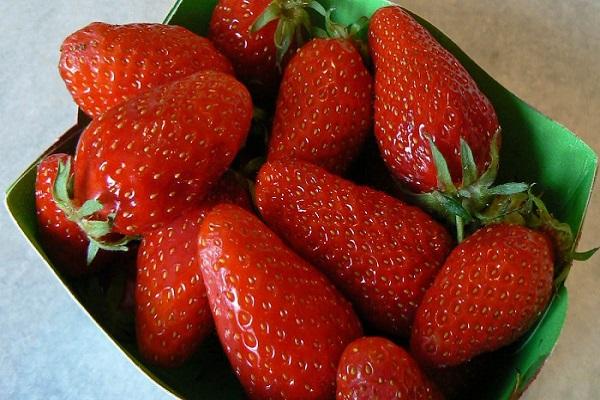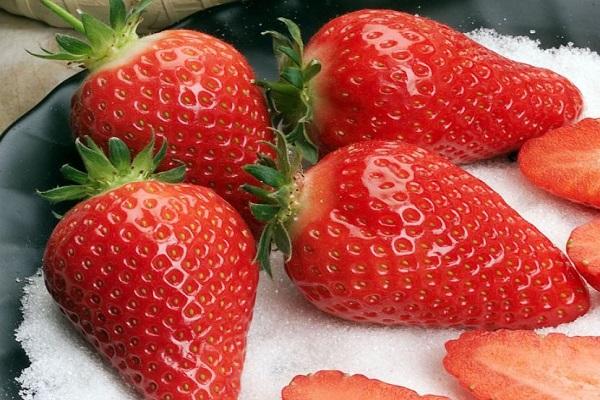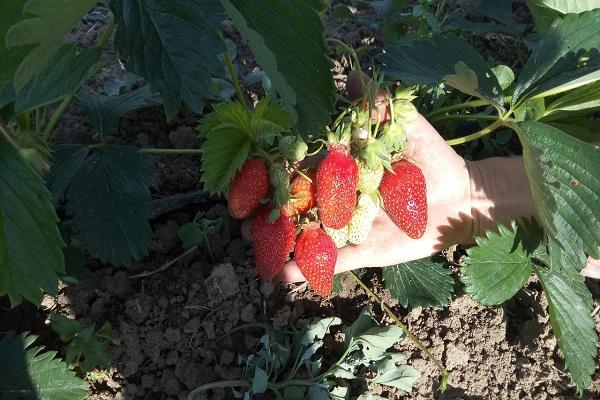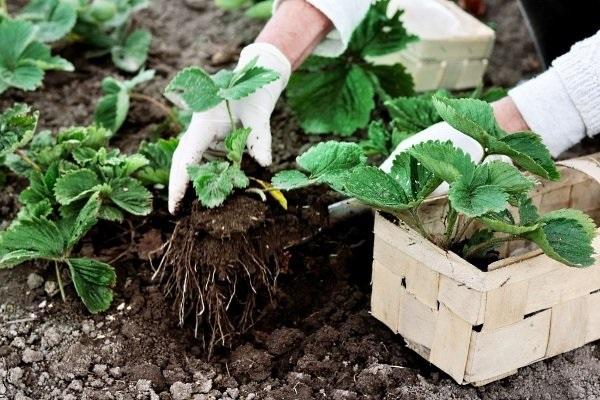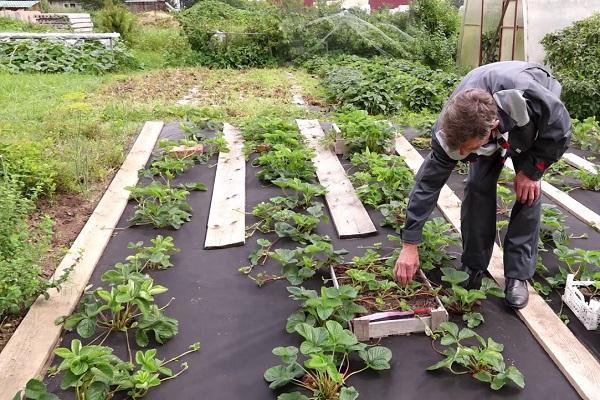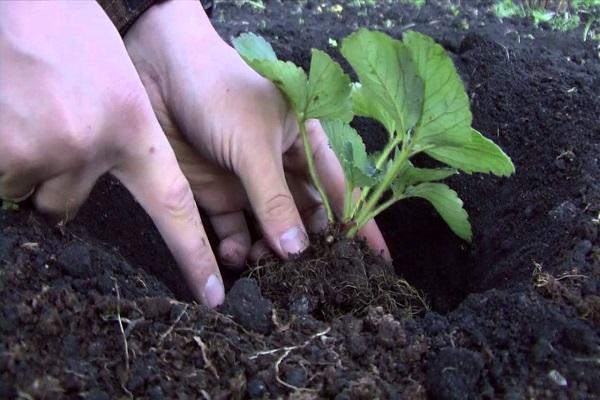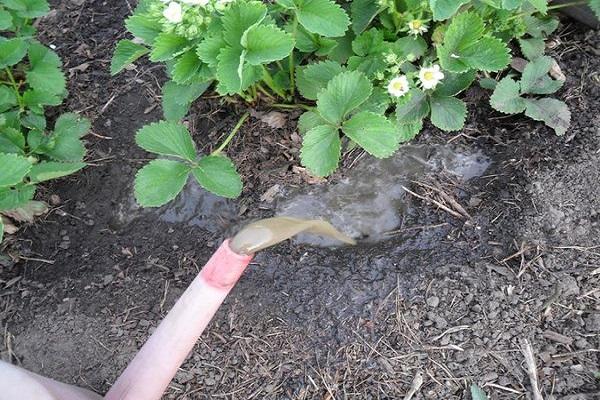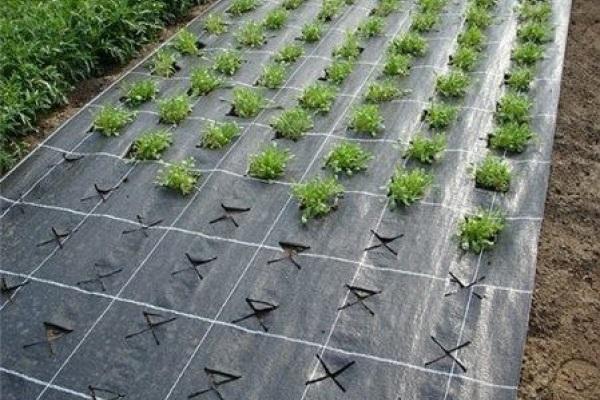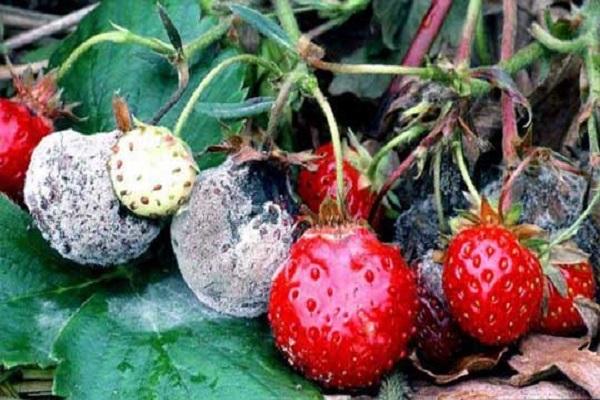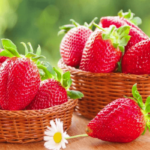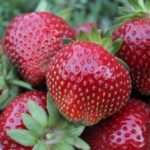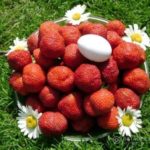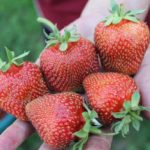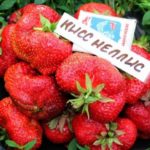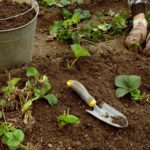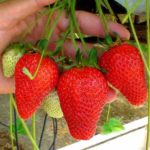The dessert variety was developed at the beginning of the 20th century, presumably in France. It is not widely used in Europe because it is considered elite and is not grown on an industrial scale. But many gardeners grow Gariguetta strawberries in their garden plots and value them for their excellent tasting qualities, rich taste and aroma, and high immunity.
- Description and characteristics of Gariguette strawberries
- Berries
- Leaves
- Yield per bush
- Peduncles
- Climate
- Pros and cons of the variety
- Cultivation
- Landing dates
- Selection and preparation of a landing site
- Preparation of planting material
- Landing rules
- Subtleties of caring for strawberries
- Watering and fertilizing
- Mulching and loosening
- Preparing for winter
- Diseases and pests of strawberries
- Technology for harvesting and storing strawberries
Description and characteristics of Gariguette strawberries
A special feature of the Gariguetta variety is the elongated cone-shaped fruit. Cultivation on an industrial scale for sale in stores is impossible, since strawberries have a low degree of preservation and cannot withstand transportation.
Berries
Description of fruits:
- the pulp is soft, juicy;
- surface color light red;
- pronounced aroma and taste;
- achenes are immersed in the pulp;
- characterized by surface roughness;
- in the first fruits the shape is ribbed, in subsequent fruits it becomes varied;
- partial ripening is possible, when the end of the berry remains unripe;
- the weight of the first fruits is 70 g; by the end of the season, the berries become smaller and do not exceed 30 g.
Leaves
Medium size, rich green color. The surface of the leaf plate is slightly rough. The shape is round, with pronounced light green veins. The bush is of medium size, but strong. The root system is developed.
Yield per bush
With standard agricultural practices, the yield per plant is about 400 g. If intensive agricultural technology is used, the bush can produce 600 g.
Peduncles
The flower is white, large for this type of crop, and has a cup-shaped shape. The core is yellow. The flowering shoot is strong and produces about 20 flowers under optimal conditions.
The formation of stepsons is abundant, due to which up to 20 rosettes are formed on one plant.
The Gariguette variety is characterized by high reproduction intensity.
Climate
The variety was created in the south of France, therefore, with proper care, it grows well in the southern regions of Ukraine and central Russia.
A temperate climate with no intense heat during the growing season is optimal for Gariguetta strawberries.In prolonged hot weather and the scorching sun, the taste of the berries deteriorates. But in cold climates, sour fruits are formed.
Pros and cons of the variety
The problem with growing the Gariguetta variety is that the fruits are tasty and aromatic only in suitable climatic conditions. In the Russian climate, varietal qualities are often lost.
Advantages of Gariguette strawberries grown in optimal conditions:
- rich taste and aroma;
- soft, melt-in-your-mouth pulp;
- good yield;
- abundant formation of mustaches, which allows you to independently prepare planting material;
- immunity to infection and insects.
Disadvantages of the Gariguette variety may appear when grown in the Russian climate:
- uneven size and shape of fruits;
- poor weight gain, excessive stretching and narrowing of berries if the summer is cool;
- the need to shade the plantation in hot and sunny weather;
- high acidity of fruits grown in rainy summers.
Cultivation
Gariguette strawberries are propagated by seed and vegetative methods. The second option is used more often, since mustaches with multiple rosettes provide an abundance of planting material.
Landing dates
Gariguetta strawberries are planted either in the last days of August or in the spring, after the soil has warmed up.
In the northern regions and the central zone, where the climate is cool, bushes are planted in elevated areas and mulching is used. In the southern regions, where it is constantly hot during the growing season, the strawberry plantation is shaded with an awning.
Selection and preparation of a landing site
Strawberry Gariguetta loves loose, airy, fertile soil. You should not plant it in loam and sandstone. In the lowlands, the fruits rot, so the selected area should be elevated, fenced from strong winds.
The soil is prepared for planting in the fall:
- remove remaining leaves and weeds;
- dig to a depth of about 25 cm;
- fertilize, use peat (5 kg per 1 m2), superphosphate (50 g per 1 m2) and potassium sulfate (30 g per 1 m2).
Preparation of planting material
For vegetative propagation, choose rosettes with a fully developed central part and formed roots. The bushes are carefully cut off from the mother plant, dug up, and transferred with a lump of earth to the chosen place.
When buying planting material, carefully inspect the leaves: they should not be dried out. The central part must be formed, the root system must be developed. Before planting, purchased seedlings are treated with a drug against fungal infection.
Landing rules
Leave at least 40 cm between the bushes. The row spacing is 50 cm. If the bushes are densely packed, it is difficult for the mustache to develop.
Strawberries are planted on a cloudy day. The first days after planting, the beds are shaded so that the bushes feel comfortable and take root faster.
Landing algorithm:
- dig shallow holes;
- a bush or two is placed in each recess;
- straighten the roots;
- watered;
- fill the hole with earth;
- mulch the beds.
Subtleties of caring for strawberries
The Gariguetta variety is unpretentious, but only in optimal climatic conditions. It is difficult to care for strawberries in the CIS countries.
Watering and fertilizing
In greenhouse conditions, water by drip method twice every 10 days. When grown in open ground, the frequency of watering is determined by the amount of precipitation. If the season is dry, water it in the same way as in a greenhouse. If the weather is rainy, there is no need to water.
Fertilizer application:
- in the spring, when the first leaves appear - urea;
- after flowering - potassium, phosphorus, a mixture of organic matter and ash;
- at the beginning of fruit formation – growth stimulator.
Mulching and loosening
Mulching is a mandatory procedure when growing both in a greenhouse and in open ground. Immediately after planting, add peat, pine needles, and straw.
If the beds are covered with agrofibre, there is no need to loosen them. If the ground is open, then loosening is carried out when a crust forms on the soil surface. Don't forget about weed control.
Preparing for winter
Gariguetta strawberries will not survive the winter unless protected. To protect from the cold, the bushes are tightly covered with pine needles and straw, and a film is placed on top. You can install arcs and stretch agrofibre.
In the southern regions, film shelter for the winter is not required. It is enough to put a dense layer of mulch.
Diseases and pests of strawberries
Strawberry Gariguette has a high immunity. The only problem that a gardener may encounter is mold on the fruit, but not due to infection, but due to contact with excessively moist soil.
Of the pests, slugs most often attack strawberries. They are fought with the help of the drug Karbofos.
Technology for harvesting and storing strawberries
The fruits are harvested a few days before full ripening. Collection is carried out in the morning, after the dew has dried, or in the evening. Dry fruits last longer. For collection, take wooden boxes or plastic containers. The bottom is covered with paper. The berries are picked carefully, the tails are not torn off.
Store the harvest in the refrigerator. The shelf life does not exceed 3 days. At room temperature, the berries last no more than a day.
For long-term storage, strawberries will have to be frozen. But after defrosting, the berries fall apart and cannot be consumed fresh. They are used to prepare compotes, smoothies, and desserts.

